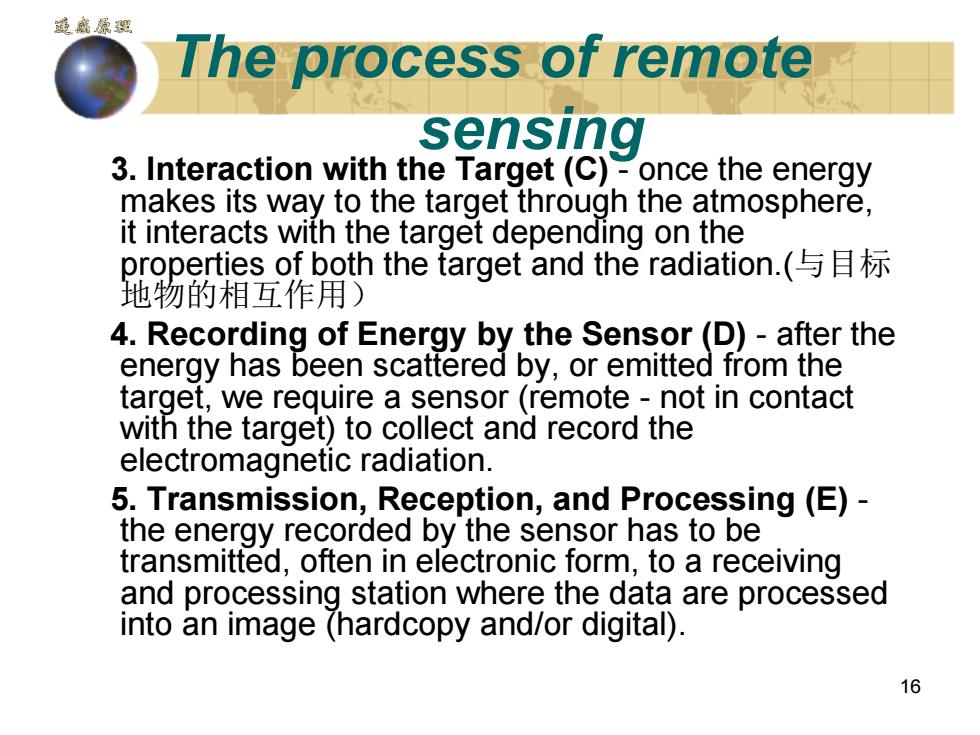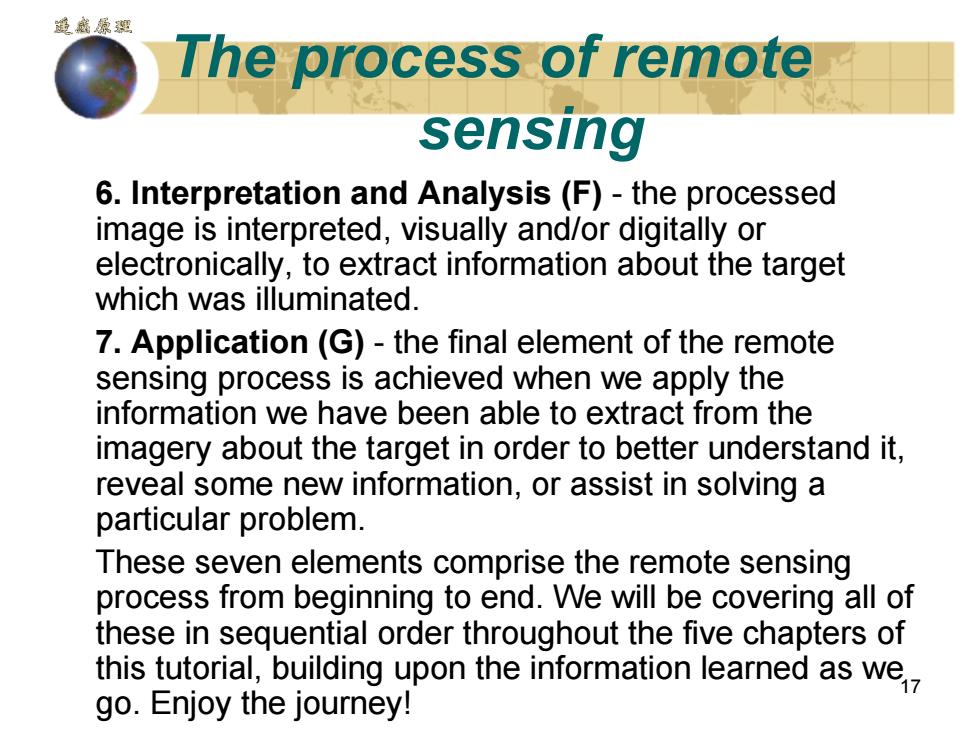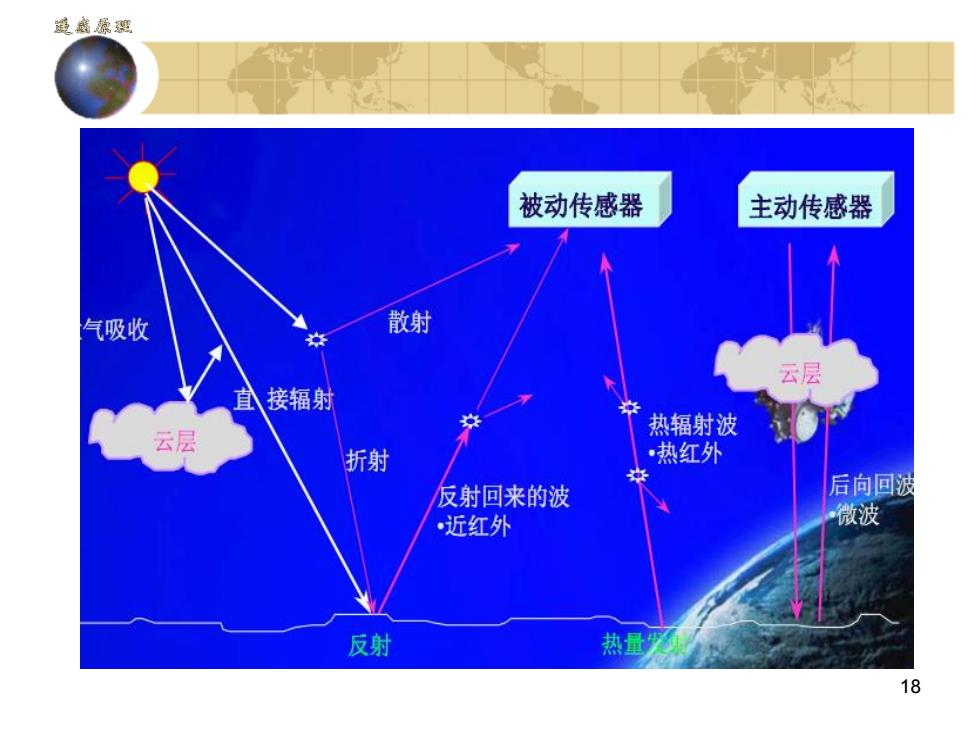
递盛原迎The process ofremotesensing3. Interaction with the Target (C)once the energymakes its way to the target through the atmosphere,it interacts with the target depending on theproperties of both the target and the radiation.(与目标地物的相互作用)4.Recordingof EnergybytheSensor(D)-aftertheenergy has been scattered by, or emitted fromthetarget,we reguire a sensor (remote -not in contactwith the target) to collect and record theelectromagnetic radiation.5. Transmission, Reception, and Processing (E) -the energy recorded by the sensor has to betransmitted, often in electronic form, to a receivingand processing station where the data are processedinto an image (hardcopy and/or digital)16
16 The process of remote sensing 3. Interaction with the Target (C) - once the energy makes its way to the target through the atmosphere, it interacts with the target depending on the properties of both the target and the radiation.(与目标 地物的相互作用) 4. Recording of Energy by the Sensor (D) - after the energy has been scattered by, or emitted from the target, we require a sensor (remote - not in contact with the target) to collect and record the electromagnetic radiation. 5. Transmission, Reception, and Processing (E) - the energy recorded by the sensor has to be transmitted, often in electronic form, to a receiving and processing station where the data are processed into an image (hardcopy and/or digital)

递廣原汇The processofremotesensing6. Interpretation and Analysis (F)- the processedimage is interpreted, visually and/or digitally orelectronically, to extract information about the targetwhich was illuminated.7. Application (G) - the final element of the remotesensingprocess is achievedwhen we applytheinformation we have been able to extract fromtheimagery about the target in order to better understand it,reveal some new information, or assist in solving aparticular problem.These seven elements comprise the remote sensingprocess from beginning to end. We will be covering all ofthese in sequential order throughout the five chapters ofthis tutorial, building upon the information learned as we17go. Enjoy the journey!
17 The process of remote sensing 6. Interpretation and Analysis (F) - the processed image is interpreted, visually and/or digitally or electronically, to extract information about the target which was illuminated. 7. Application (G) - the final element of the remote sensing process is achieved when we apply the information we have been able to extract from the imagery about the target in order to better understand it, reveal some new information, or assist in solving a particular problem. These seven elements comprise the remote sensing process from beginning to end. We will be covering all of these in sequential order throughout the five chapters of this tutorial, building upon the information learned as we go. Enjoy the journey!

通盛原理被动传感器主动传感器散射气吸收格云层直接辐射热辐射波.云层·热红外折射中后向回波反射回来的波微波·近红外反射热量发18
18